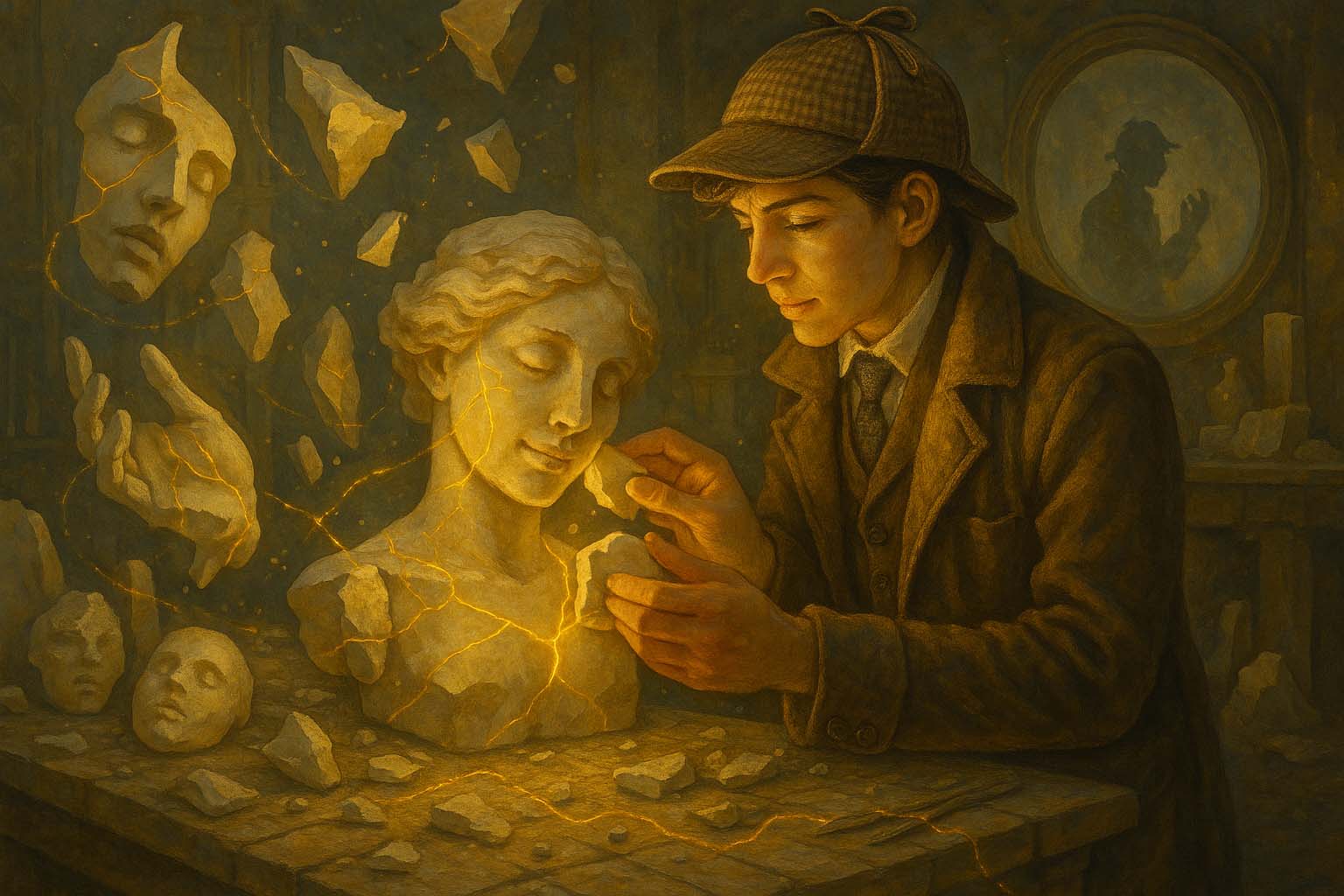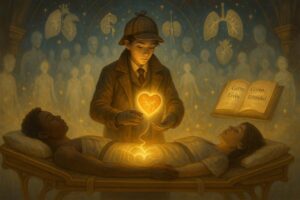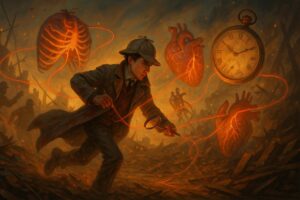
Reconstructive Surgery
- Posted by admin
- Categories Reconstructive, Transplant & Trauma Surgery
- Date May 24, 2025
- Comments 0 comment
The Reconstructive Detective’s Domain – Cracking the Cases of Damage, Deficit, and the Craft of Wholeness
1. Introduction: The Scene of the Specialty
Step into the shoes of a Reconstructive Surgery sleuth.
This is the specialty of surgical redemption—where the goal is not just to remove or repair, but to restore. Reconstructive surgeons are the sculptors of healing, tasked with rebuilding bodies after trauma, cancer, burns, or congenital defects. Their theatre is complex, creative, and deeply personal. Welcome to a world where a flap becomes a face, where a graft gives back grip, and where every stitch is part of a larger story of renewal.
2. Key Mysteries They Solve (Common Conditions)
These detectives specialise in solving cases involving:
- Post-Cancer Reconstruction – restoring form and function after breast, head & neck, or skin cancer resection.
- Trauma and Burn Repair – salvaging damaged limbs, skin, and facial structures.
- Congenital Defects – such as cleft lip/palate, craniofacial anomalies, or hand deformities.
- Complex Wound Coverage – managing chronic wounds, pressure ulcers, and tissue loss with flaps or grafts.
Each case is an act of anatomical problem-solving—and an invitation to recover something lost.
3. Their Trusted Tools & Techniques
Every detective has their kit—and in Reconstructive Surgery, tools may include:
- Local, Regional, and Free Flaps – transferring tissue to restore volume, cover, or contour.
- Skin Grafting and Tissue Expansion – rebuilding surface and shape gradually over time.
- Microsurgery – for nerve, vessel, and tissue reconnections under the microscope.
- CAD/CAM Surgical Planning & 3D Modelling – particularly in craniofacial and limb reconstruction.
This is not just surgical skill—it’s architectural thinking, delicate craft, and patient partnership.
4. The Charms of This Field: Why It Captivates the Curious
- Purposeful Creativity: You solve puzzles that have no single answer—only elegant options.
- Personal Transformation: Your work is often visible, functional, and profoundly meaningful.
- Cross-Specialty Impact: Collaborate with trauma, oncology, paediatrics, orthopaedics, and burns teams.
- Long-Term Relationships: Complex reconstructions unfold over months or years—you walk the road with your patient.
This is the art of surgical empathy—form follows function, and function follows the human spirit.
5. Challenges: The Toughest Cases They Face
- Tissue Compromise – Poor vascularity, radiation damage, and infection increase risk.
- Emotional Weight – Patients may carry visible scars of trauma, cancer, or congenital difference.
- Lengthy and Staged Surgeries – Reconstruction may require multiple phases and months of healing.
- Expectation Management – Surgical success is measured in realism, not perfection.
But the experienced reconstructive surgeon knows: your greatest tool is trust.
6. Famous Cases and Hallmark Clues
- The “Classic Presentation” – Mastectomy patient seeking breast reconstruction: implant-based or autologous flap?
- The “Zebra” – Facial defect after skin cancer excision: requires staged local flap with cartilage support.
- The “Aha Moment” – Chronic open wound finally closes after rotational flap restores tension-free coverage.
7. Your Training Trail: How to Join the Investigation
To become a Reconstructive Surgery detective:
- Train in plastic surgery, or specialise through fellowships in trauma, burns, craniofacial, or oncoplastic surgery.
- Master microsurgical technique and tissue handling—every layer matters.
- Develop spatial reasoning and creative problem-solving—you’ll often build the solution from scratch.
- Listen deeply to patients—what they want back may be physical, functional, or emotional.
Whether you’re rebuilding a jaw, a breast, or a hand, you are offering more than restoration—you’re offering continuity.
8. Final Words: The Signature of the Reconstructive Surgery Detective
Reconstructive surgery detectives are restorers of form and dignity.
They meet patients in the aftermath of injury, illness, or difference—and rebuild what was taken.
They don’t just see defects—they see stories waiting to be retold through tissue, shape, and skill.
So if you’re drawn to craftsmanship with consequence and healing that holds meaning—then this is your canvas, your cause, and your calling.



